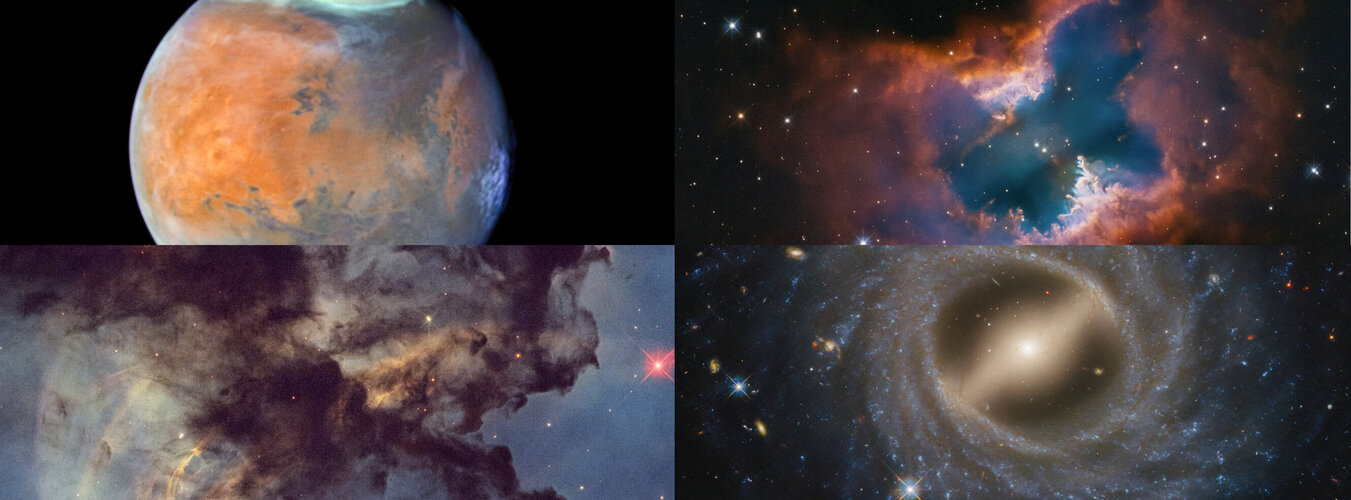A lasting legacy


Access the video
Hubble’s legacy is the bridge between our past and future knowledge of a Universe that is unbelievably glorious, as well as rambunctious – with colliding galaxies, voracious black holes and relentless stellar fireworks. Hubble, more than any other telescope, sees the Universe through the eyes of Einstein: microlensing, time dilation, the cosmological constant, matter disappearing into a black hole and a source of gravitational waves.
Before 1990, powerful optical telescopes on Earth could see only halfway across the cosmos. Estimates for the age of the Universe disagreed by a big margin. Supermassive black holes were only suspected to be the powerhouses behind a rare 'zoo' of energetic phenomena. Not a single planet had been seen around another star.
Among its long list of breakthroughs: Hubble’s deep fields unveiled myriad galaxies dating back to the early Universe; precisely measured the Universe’s expansion; found that supermassive black holes are common among galaxies; made the first measurement of the atmospheres of extrasolar planets; contributed to discovering 'dark energy', which is accelerating the Universe.
After three decades, Hubble remains a household word as the most well-recognised and celebrated scientific instrument in human history. Hubble’s discoveries and images have been nothing less than transformative for the public’s perception of the cosmos. Unlike any other telescope before it, Hubble has made astronomy very relevant, engaging and accessible for people of all ages. Hubble became 'the people’s telescope,' touching the minds as well as the emotions of hundreds of millions of humans around the globe.
A single Hubble snapshot can portray the Universe as awesome, mysterious and beautiful – and at the same time chaotic, overwhelming and foreboding. These pictures have become iconic, seminal and timeless. They viscerally communicate the value of science: the awe and drive to seek understanding of our place in the cosmos. In commemoration, NASA and ESA released images today of five astronomical targets that were selected for the celebration, ranging from planets to nebulae to galaxies.
The relentless pace of Hubble’s trailblazing discoveries kicked-started a new generation of space telescopes for the 21st century. The powerful James Webb Space Telescope may not have been built without Hubble revealing an 'undiscovered country' of far-flung, seemingly countless galaxies. Hubble provided the first observational evidence that there was a lot for Webb to pursue in infrared wavelengths that reach even greater distances beyond Hubble’s gaze. Now, Hubble and Webb are often being used in complement to study everything from exoplanets to galaxy dynamics.

